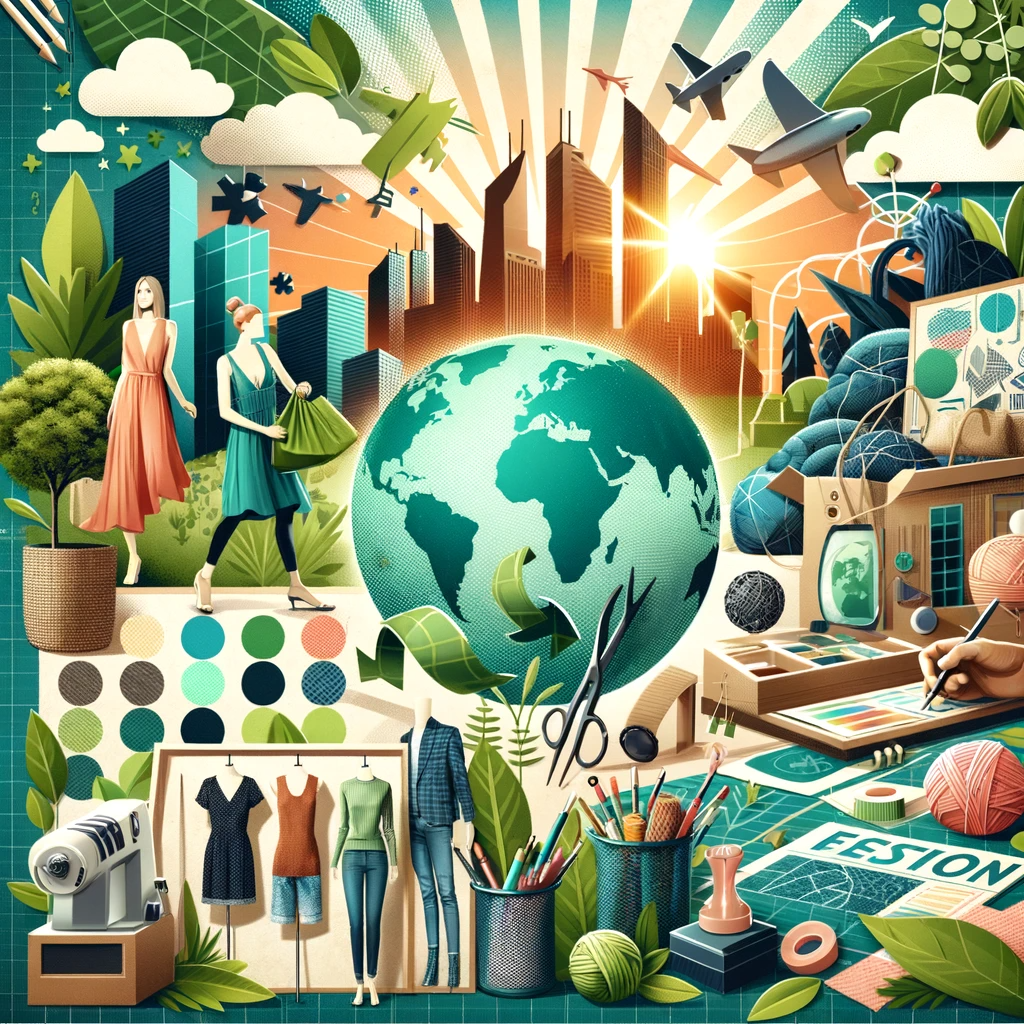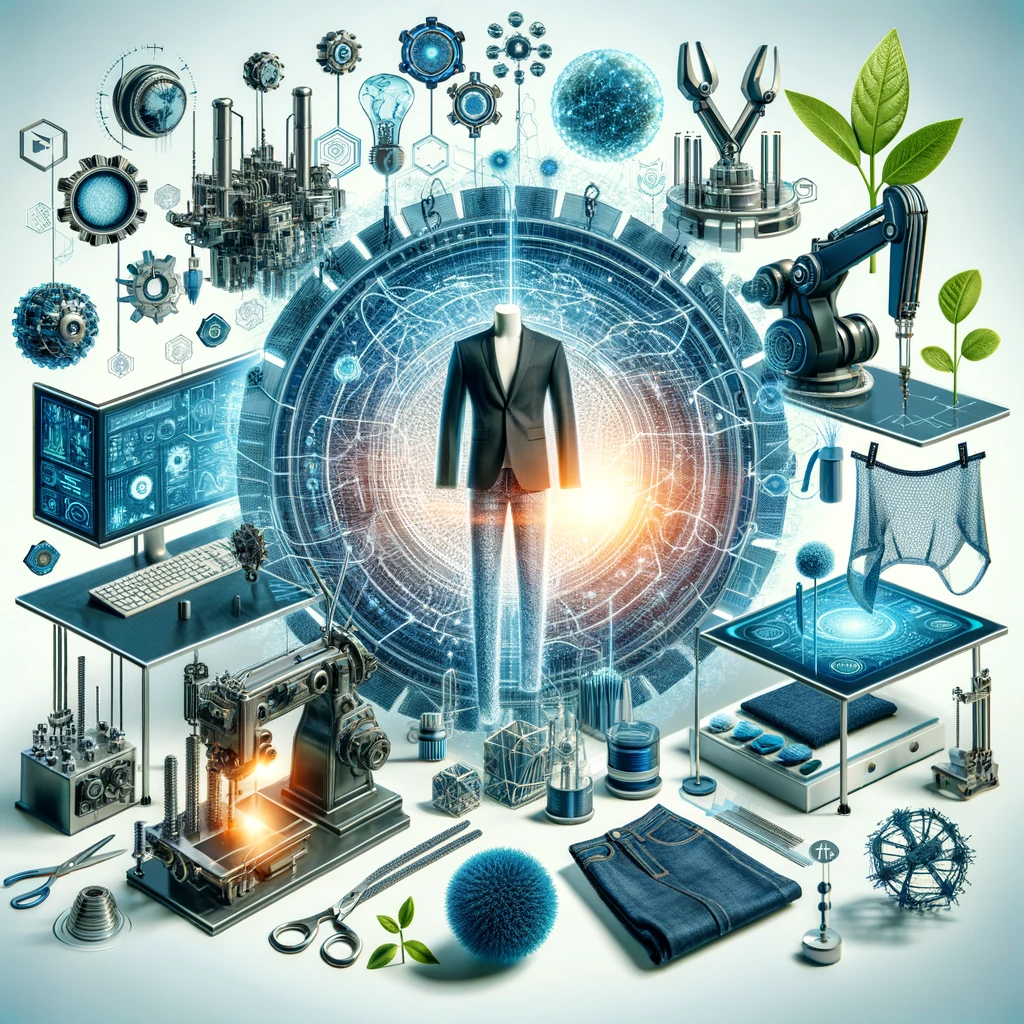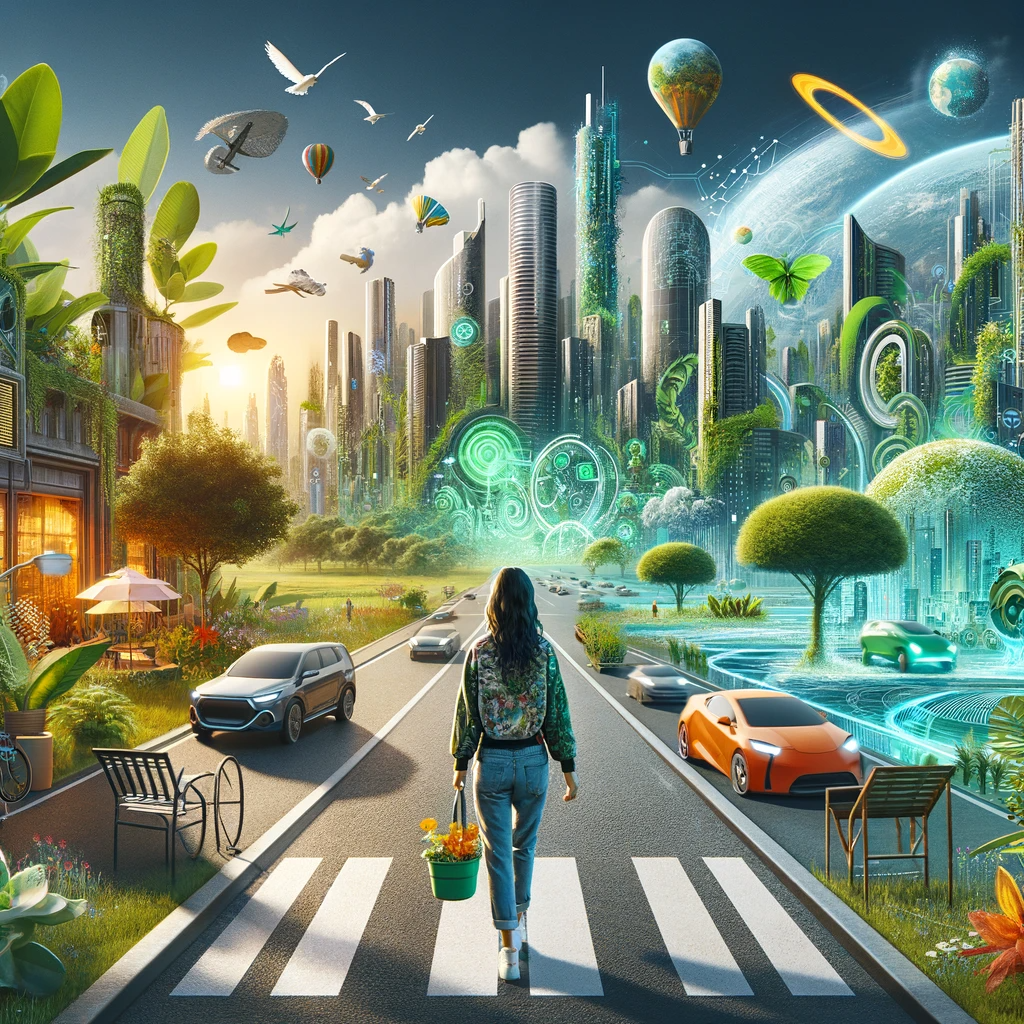Outline:
- The Current State of Sustainable Fashion: Examining the sustainable fashion trends of 2023 and their impact.
- Predictive Insights: Fashion Sustainability in 2026 and Beyond: Analyzing predictions and anticipated changes in fashion sustainability.
- Technological Innovations Shaping Sustainable Fashion: Exploring how technology is driving the future of eco-friendly fashion.
- Sustainable Fashion by 2030: A Visionary Outlook: Projecting the long-term future of sustainable fashion and its global influence.
- Predicting and Adapting to Future Fashion Trends: Strategies for staying ahead in the evolving landscape of sustainable fashion.
Introduction
In a world increasingly conscious of its ecological footprint, the fashion industry stands at a pivotal crossroads. The quest for sustainability in fashion is not just a fleeting trend but a crucial movement shaping the future of how we dress. "Tomorrow's Threads: Unraveling the Future of Sustainable Fashion Trends" delves deep into this green evolution, exploring the current landscape, predictive insights, and technological innovations that are weaving the fabric of a more sustainable future in fashion. As we venture closer to 2030, understanding these shifts is essential for anyone interested in the intersection of style, sustainability, and social responsibility. This article will guide you through the vibrant tapestry of sustainable fashion, predicting its path and examining how it's set to revolutionize our wardrobes and the world.

The Current State of Sustainable Fashion
Understanding the Sustainable Fashion Trends of 2023
As we embark on a journey into the world of sustainable fashion, it's imperative to grasp the current state of this dynamic field. The year 2023 has been a landmark in showcasing how fashion can be both stylish and sustainable. Here, we examine the key trends that have defined this year and their significance in the broader context of eco-friendly fashion.
1. Eco-Friendly Fabrics: The rise of materials like organic cotton, bamboo, and recycled polyester has marked a significant shift in the industry. These fabrics not only reduce the environmental impact but also offer new textures and aesthetics to fashion enthusiasts.
2. Emphasis on Recycling: With a growing awareness of the textile waste problem, recycling has become a central theme in fashion design. Brands are increasingly repurposing old garments and materials, transforming them into new, chic fashion pieces.
3. Slow Fashion Movement: 2023 has seen a surge in the slow fashion movement, advocating for high-quality, timeless pieces over fast, disposable trends. This approach encourages consumers to invest in durable items that outlast seasonal fads.
4. Ethical Manufacturing and Transparency: Consumers are now more interested in the 'how' and 'who' behind their clothing. Brands embracing ethical manufacturing processes and transparency about their supply chains have gained popularity.
5. Innovative Sustainable Designs: Designers are experimenting with cutting-edge sustainable designs, integrating both functionality and style. This includes the use of biodegradable materials and innovative techniques that minimize environmental impact.
Case Study: DL1961's Sustainable Approach in 2023
A notable example is DL1961, a brand recognized for its commitment to sustainable fashion. In 2023, DL1961 took significant strides in promoting eco-friendly practices. They utilized advanced recycling techniques and sustainable materials to create their collections, setting a new standard in the industry. Their approach not only reduced environmental impact but also demonstrated how sustainability can be seamlessly integrated into fashionable, high-quality garments. This case study exemplifies the potential of sustainable practices in transforming the fashion industry, making DL1961 a forerunner in the green fashion movement.
The Impact of These Trends
The sustainable fashion trends of 2023 have not only influenced consumer behavior but also set a precedent for the industry. These trends represent a significant step towards a more environmentally conscious fashion world, demonstrating that sustainability and style can coexist harmoniously.

Predictive Insights: Fashion Sustainability in 2026 and Beyond
Anticipating Changes in Fashion Sustainability
As the fashion world evolves, so too does the concept of sustainability within it. Looking towards 2026 and beyond, we can anticipate significant changes that will further shape the future of sustainable fashion. This section explores these upcoming trends and their potential impact on the industry.
1. Advanced Material Innovation: The future holds promise for the development of even more eco-friendly materials. Innovations in bio-fabrics, such as lab-grown leather or algae-based textiles, are expected to gain prominence, offering new possibilities for sustainable fashion.
2. Enhanced Recycling Technologies: Technological advancements will likely make recycling textiles more efficient and effective. This could lead to a surge in the use of recycled materials in mainstream fashion, further reducing waste and environmental impact.
3. The Rise of Digital Fashion: With the digital world becoming more intertwined with our daily lives, virtual clothing and digital fashion shows could become more prevalent. This shift not only opens new creative avenues but also significantly reduces the carbon footprint associated with physical fashion productions.
4. Consumer-Driven Sustainability: As consumers become more environmentally conscious, their demand for sustainable products will continue to shape the industry. Brands that fail to adapt to this eco-friendly mindset risk falling behind in the market.
5. Sustainability as a Standard, Not a Feature: By 2026, sustainability is likely to become a standard expectation in fashion, rather than a unique selling point. This shift will encourage all fashion brands to integrate sustainable practices into their business models.
Case Study: The Evolution of Circular Fashion Models by 2026
By 2026, a significant trend shaping the future of sustainable fashion will be the advancement of circular business models. This concept focuses on creating a sustainable life cycle for clothing, emphasizing resale, rental, repair, and refurbishment. These models are not only eco-friendly but also economically viable, reducing waste and promoting a more sustainable consumption pattern.
The Long-Term Impact of These Predictions
The predicted changes for 2026 and beyond highlight a significant shift in the fashion industry, where sustainability becomes deeply integrated into every aspect of fashion design and production. These trends not only reflect an industry in transformation but also underscore the collective responsibility to foster a more sustainable future.

Technological Innovations Shaping Sustainable Fashion
The Role of Tech in Driving Eco-Friendly Fashion Forward
The future of sustainable fashion is inextricably linked to technological advancements. These innovations not only redefine the production and consumption of fashion but also pave the way for more sustainable practices. Let's explore how technology is set to revolutionize sustainable fashion.
1. AI and Machine Learning in Design and Manufacturing: Artificial intelligence and machine learning are transforming fashion design and manufacturing processes. These technologies can optimize material usage, reduce waste, and even predict fashion trends, leading to more efficient and sustainable production methods.
2. Blockchain for Transparency and Traceability: Blockchain technology is becoming a crucial tool for enhancing transparency in the fashion supply chain. It allows consumers to trace the origin of their garments, ensuring that they are ethically and sustainably produced.
3. 3D Printing and On-Demand Manufacturing: 3D printing is set to reduce waste significantly by enabling on-demand production of clothing. This approach minimizes excess inventory and allows for the customization of garments, reducing the environmental impact of mass production.
4. Sustainable Textile Innovations: Technological advancements are leading to the development of new sustainable textiles. These include fabrics made from recycled materials, biodegradable fibers, and even materials engineered at a molecular level to be more sustainable.
5. Virtual and Augmented Reality in Fashion Retail: VR and AR are changing the way we shop for clothing. Virtual try-ons and digital showrooms can reduce the need for physical samples and inventory, lowering the carbon footprint of the retail experience.
Case Study: Pioneering Technological Innovations in Sustainable Fashion
In the realm of sustainable fashion, several innovative projects and companies have made significant strides, utilizing technology to drive eco-friendly practices forward. Let's look at some of these pioneering examples:
- Eon and Digital ID for Supply Chain Transparency: Eon, founded in 2017, is revolutionizing fashion supply chains by attaching digital IDs to materials and goods. This technology enables brands to have detailed oversight of their products throughout the supply chain, allowing them to identify and address social or environmental risks. Eon collaborates with major fashion platforms and brands, such as Zalando, PANGAIA, and Net-a-Porter, to enhance traceability and communicate the journey of products to consumers with verified data.
- Refiberd and AI-Powered Textile Recycling: Refiberd, established by three engineers in 2020, combines a hyperspectral imaging system with AI to detect the composition of fibers in blended materials, which are traditionally challenging to recycle. This technology enables the separation and chemical recycling of cellulose and polyester into new threads, with up to 93% of the original garment being recycled. Notably, Refiberd threads are significantly cheaper than other sustainable alternatives, addressing the cost barrier often associated with sustainable innovations.
- Mirum's Plastic-Free Leather Alternative: Mirum, by Natural Fiber Welding, offers one of the few commercially available, plastic-free, plant-based materials as an alternative to leather. Using agricultural waste and plant-based rubber, Mirum creates a leather-like material with a significantly lower carbon footprint and zero water usage in production. Their commitment to using 100% non-synthetic inputs means the material can also be recycled, marking a promising step in sustainable material innovation.
- Style.me's Virtual Fitting Room Plug-In: Addressing the issue of clothing returns due to poor fit, Style.me has developed a virtual fitting room plug-in. This technology allows customers to create avatars matching their measurements, drastically reducing return rates and the associated environmental impact. Brands utilizing Style.me gain valuable sizing data, enabling them to design products better suited to their customers' needs.
- Shimmy Technologies' AI-Powered Worker Upskilling: Shimmy Technologies, founded by Sarah Krasley in 2016, is transforming the fashion industry through automation. Shimmy's AI-powered training platform upskills and reskills garment workers, equipping them with the necessary skills to adapt to new roles in an evolving industry. Their collaboration with brands like Zalando, Under Armour, and the H&M Foundation highlights the potential of technology to create more sustainable and equitable employment opportunities in fashion.
These examples illustrate the profound impact that technology can have on sustainable fashion, offering innovative solutions to some of the industry's most pressing challenges.

Sustainable Fashion by 2030: A Visionary Outlook
Envisioning the Long-Term Future of Sustainable Fashion
As we look towards 2030, the fashion industry is poised for a transformative shift towards sustainability. This decade will likely witness a culmination of current trends and the emergence of new practices, shaping a more environmentally responsible and ethically conscious fashion landscape. Here, we explore what sustainable fashion might look like by 2030.
1. Mainstreaming of Circular Fashion Models: By 2030, circular fashion models, emphasizing reuse, recycling, and sustainable lifecycle management, are expected to become the norm rather than the exception.
2. Zero-Waste Production Processes: Advances in technology and design will enable brands to achieve near-zero waste in production, utilizing every bit of material and minimizing environmental impact.
3. Integration of Sustainability in All Aspects of Fashion: Sustainability is projected to become an integral part of the fashion industry, influencing everything from material sourcing to manufacturing, distribution, and consumer usage.
4. Consumer Shift Towards Sustainable Choices: A significant shift in consumer behavior is anticipated, with a greater emphasis on sustainability driving purchase decisions. This includes a preference for sustainable brands, long-lasting garments, and eco-friendly practices.
5. Regulatory and Policy Changes: Governments and international bodies may introduce more stringent regulations and policies promoting sustainable practices in the fashion industry, accelerating the shift towards eco-friendliness.
Case Study: Fashion Futures 2030 - A Visionary Initiative for Sustainable Fashion
As we envision the sustainable fashion landscape of 2030, "Fashion Futures 2030" stands out as a pioneering initiative. Developed by the Forum for the Future in partnership with the Centre for Sustainable Fashion at London College of Fashion, UAL, and supported by the Laudes Foundation, this project offers an open-source interactive learning toolkit. Its purpose is to guide and inspire the fashion industry on its sustainability journey, helping companies and educators navigate the uncertainties of the future.
Fashion Futures 2030 presents four potential scenarios for the intersection of fashion and nature, taking into account various current trends like climate change, nationalism, and AI. These scenarios are designed to prompt industry professionals, educators, and students to contemplate the vast possibilities for the future of fashion. The toolkit includes a variety of practical resources for developing future-fit products and innovations, along with strategies for business and communications. This initiative serves as a prime example of how thought leadership and collaborative efforts can pave the way for a more sustainable and adaptable fashion industry by 2030.
The Fashion Futures 2030 initiative exemplifies the proactive approach needed to reshape the fashion industry. By considering a range of potential futures and equipping stakeholders with the tools to adapt, it underscores the importance of innovation and foresight in achieving sustainable fashion goals.
The vision for sustainable fashion by 2030 is one of an industry transformed by conscientious practices and innovative solutions. It's a future where fashion not only looks good but also does good for the planet and its inhabitants.

Predicting and Adapting to Future Fashion Trends
Strategies for Staying Ahead in the Sustainable Fashion Landscape
The ability to predict and adapt to future fashion trends is crucial for any brand or designer wishing to remain relevant and successful, especially in the rapidly evolving field of sustainable fashion. Here, we outline strategies to stay ahead of the curve:
1. Leveraging Data and Analytics: Utilizing data analytics tools to understand consumer preferences and market trends can help brands make informed decisions about design, production, and marketing.
2. Fostering Innovation and Creativity: Encouraging a culture of innovation within the organization can lead to groundbreaking sustainable fashion solutions.
3. Building Partnerships and Collaborations: Collaborating with technology companies, environmental experts, and other fashion brands can lead to shared knowledge and new opportunities.
4. Continuous Learning and Adaptation: Staying informed about the latest developments in sustainable fashion and being willing to adapt business models accordingly is key.
5. Engaging with Consumers: Developing a strong relationship with consumers, understanding their values, and involving them in the sustainability journey can create a loyal customer base.
Conclusion: The Road Ahead
The future of sustainable fashion is not just about the clothes we wear; it's about the values we uphold and the legacy we leave behind. As we move towards 2030 and beyond, the fashion industry's ability to predict and adapt to changing trends in sustainability will not only define its success but also its contribution to a healthier planet and society.

